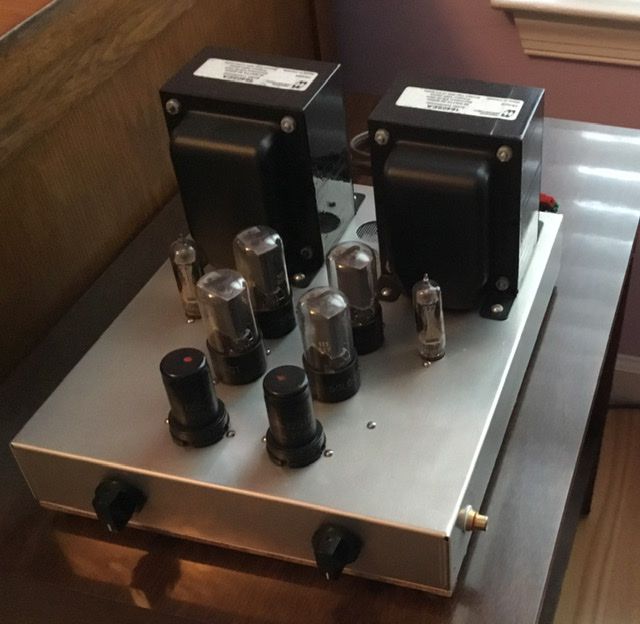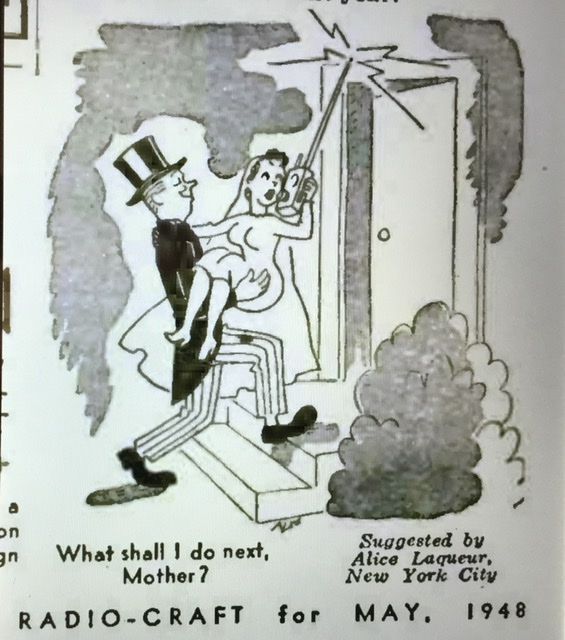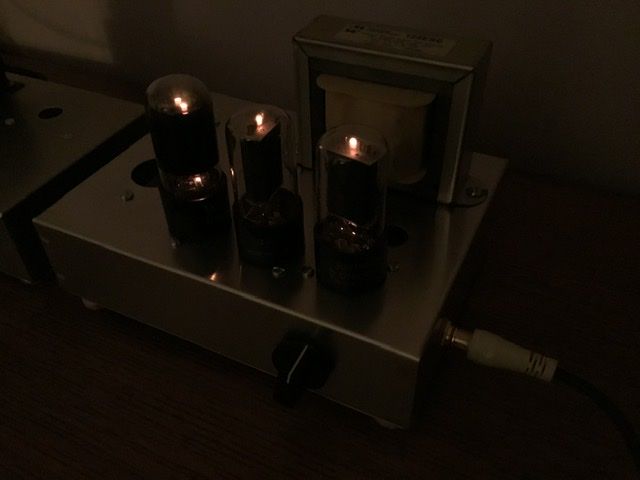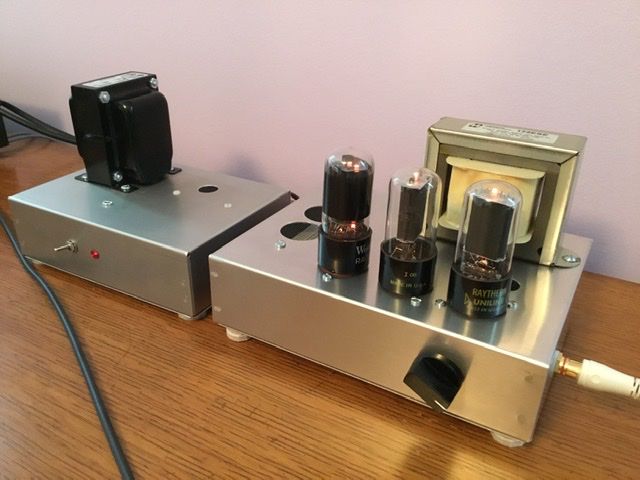-
Posts
2978 -
Joined
Content Type
Forums
Events
Gallery
Posts posted by tube fanatic
-
-
I have always admired the creativity of someone who can turn out an amp which looks like this:
https://www.deviantart.com/aevilmike/art/SteamAmpII-01-490593565
Maynard
-
 2
2
-
-
Jeffrey, as Henry has explained to you, this thread is not about your design philosophy. Why can’t you respect his desire to keep this as a PICTURE thread? I was enjoying it greatly until you began spouting your ideas. For the benefit of all who only want to look at amp pictures please refrain from technical comments. Thank you!
Maynard
-
 4
4
-
-
12 hours ago, Jeffrey D. Medwin said:
There are two things
I thought this thread is for posting pictures of tube amps, not criticism of how they are made.Maynard
[It is, per OP's request, I will spit off unsolicited advice into their own thread(s), if y'all are interested you can read what others have to say about how you are doing it all wrong, or not.]
-
 2
2
-
-
3 hours ago, Jeffrey D. Medwin said:
The Klispch speakers are generally hard to drive, with a SE power amp. It's got high transfer efficiency losses, often a three way crossover to drive through, which is a killer for a sub 2 Watt amp to handle. As I reported earlier above, you have to match the speaker to the amp.
An acceptable push-pull tube amp, could be built for Klipsch speakers, but no one has ever done that in audio to date.
Jeff Medwin
Jeffrey, in regard to your first point, it is totally untrue in my experience. As to your second point above, back in the day I built many wonderful push-pull tube amps for use with Klipsch speakers.
How do you come to these conclusions?
Maynard
-
 2
2
-
-
-
A detailed description of the listening room, listening level, proximity to the speakers when listening, types of music listened to, etc. would be helpful in terms of making recommendations.
Maynard
-
Yes— contact Bob Latino.
Maynard
-
 1
1
-
-
-
-
-
2 hours ago, Drunkenst said:
Is Sal still restoring amps? I heard he is only selling parts now.
Maynard
-
A clipped sine wave does not have a dc component. I would be more concerned with a SS amp which has a very high dc offset. The latter is easily measured.
Maynard
-
-
-
Here is what Augspurger and Murphy had to say about this very interesting subject:
https://butleraudio.com/damping1.php
Maynard
-
14 hours ago, Backfire said:
Another point is that what is commonly called the "damping factor" is a rather misleading, not to say almost meaningless, concept. I sketched a couple of diagrams in a pdf, to show what I mean. Its not a new point I'm making, and is perfectly well understood by those who analyse equivalent circuits, but it is one that does not seem to be widely appreciated. The calculations I've included are a bit rough and ready, but they illustrate the key idea.
The main point is that the speaker resistance (literally the resistive component of the speaker's impedance) should be being added to the output impedance of the amplifier, and it should appear in the denominator in the calculation of a meaningful damping factor. (Not added into the numerator, where it is commonly put!) Because the speaker resistance is generally a major contributor to the overall impedance of the speaker, it means the true damping factor will never really get much larger than about 1.
Well stated. Yet, having an output impedance of 30+ ohms, as is often found with SEPs when no voltage fb is used, seems to make little or no difference when used with many speakers.
Maynard
-
16 hours ago, boom3 said:
Thanks for the replies, however, let me re-phrase the inquiry:
If one has two tube amps identical in every way, except for one output transformer having a lower secondary resistance than the other, which will be abetter match for Klipschorns?
The DC resistance of the secondary is of no consequence in general. The output impedance is a different matter. I have used high output impedance as well as low output impedance amps with Khorns and have gotten excellent results with both. Again, you would need to experience different amps yourself and choose what you find most pleasing. No one can tell you what will be best for your ears.Maynard
-
 1
1
-
-
It depends on your definition of satisfactory. Some users like very low DF SEPs, often with less than 1 wpc, while others prefer 60 or more wpc. The only way for you to make a determination is to try various tube amps and draw your own conclusions.
Maynard
-
 1
1
-
-
On 10/8/2020 at 10:32 PM, jajaja said:
It was super cool! Decent sound, too. It was rebuilt by Don Sachs. I paid $675 and it lasted quite a while, but over the past few years I've had numerous minor issues. If I had technical skills I'd fix the problems myself, but around DC area techs charge an arm+leg to do even minor work. I just miss hearing my vinyl, so I'm looking for a lower maintenance amp.
What problems are you having with the A300? It is not a difficult amp to service.
Maynard
-
No. It requires a totally different operating point as well as other changes.....
Maynard
-
-
-
The easiest solution is to order some JJ 12dw7s from Tube Depot for $12.95 each.
Maynard
-
There are 2 ways to reduce distortion in SEP amps. One is to use it at a fraction of its maximum output power, and the other is to use nfb. I prefer the latter (as voltage fb) as it reduces the typically high output impedance as well as increasing the bandwidth. If applied within reason, it does not ruin the resultant sound in my experience. In fact, it can provide a very triode like experience in some systems.
Maynard
















Corona Virus Disease/(SARS-CoV-2) II
in Lounge
Posted
https://www.reuters.com/article/health-coronavirus-denmark-mink/denmark-plans-to-cull-its-mink-population-after-coronavirus-mutation-spreads-to-humans-idINKBN27K1YV
When the virus is found in dogs and cats will they be killed also, and will people be forced to have their pets tested?
Maynard